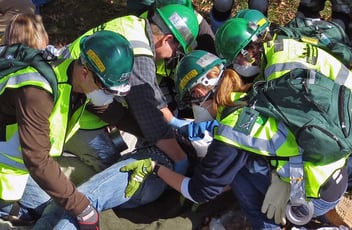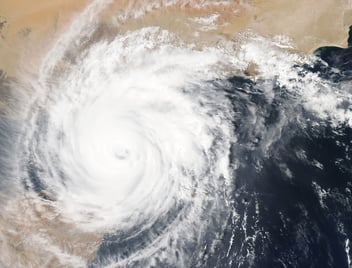Disasters are unexpected by nature, which is why it is important to have an emergency plan long before a disaster strikes. By creating a strategy and organizing resources ahead of time, your community can reduce the confusion and chaos during an actual emergency. Make sure you’re prepared for a disaster by knowing about the Community Emergency Response Team in your area.
What is a Community Emergency Response Team (CERT)?
Community Emergency Response Teams (CERTs) are governmental programs administered by the Federal Emergency Management Agency (FEMA). CERT programing offers a consistent, nationwide approach to natural disaster volunteer training. CERT is one of five Citizen Corps programs created to help build capacity for first responders through the use of volunteers. CERT team members are trained in both disaster response techniques and the types of emergencies –like floods, hurricanes, wildfires, and mudslides–that can impact their community.
Learn more about CERT and Citizen Corp programs at Ready.gov.
The purpose of a CERT is to act as a “force multiplier” in the event of a disaster. CERTS provide support while professional emergency responders focus on more dangerous, skilled, and critical assignments. CERTs typically engage in unskilled tasks like checking evacuated homes or reporting unsafe areas. CERT members also provide immediate assistance to victims and organize spontaneous volunteers at the site of the disaster. CERT teams may also collaborate with related disaster response teams.
During training, CERT members may learn:
- Basic first aid skills
- Fire safety
- Search and rescue techniques
- Team organization
CERT team managers often rely on disaster volunteer management software to coordinate emergency and disaster response programs. Galaxy Digital offers ReDI, a disaster management software solution that is specific to the needs of emergency response coordinators. Learn more about ReDI.
The History of Community Emergency Response Teams
The Los Angeles City Fire Department first developed the CERT concept in 1985. By 1993, FEMA made CERT training available nationwide. Since then, nearly 2,500 programs have been implemented in more than 340 communities in 45 states across the country.
Related Disaster Response Teams
As part of their core mission, emergency and disaster response teams are active during all types of disasters, from tornadoes to earthquakes. Here are some of the most common emergency response programs:
-
Citizen Corps
Citizen Corps is a program that connects a national network of over 1,200 state and local Citizen Corps Councils. In these programs, citizens work together to prepare their communities for disaster. The five federally sponsored Citizen Corps artner programs are: CERT, Fire Corps, the National Neighborhood Watch Program, the Medical Reserve Corps, Volunteers in Police Service, and The Corporation for National and Community Service.
-
NERT
NERT, or the National Emergency Response Team, was founded in 1993. In the aftermath of Hurricane Andrew, thousands of people were left without adequate shelter, food, and clothing. The founders of NERT recognized the opportunity to pool their resources to help prevent this from happening in the future. They created the idea of “same day delivery” disaster services to disaster areas. Like CERTs, NERT is a volunteer-run organization, though they are more focused on the transportation and delivery of goods to disaster zones.
-
A-DRT
A-DRT or Americorps Disaster Response Teams, are AmeriCorps State and National grantee programs. They also focus on disaster response and recovery work. Unlike CERTs, A-DRTs are deployed across the country to disaster zones. During deployment, they are managed by AmeriCorps Incident Command Team (ACT). A-DRTs are a recognized resource in the emergency management community.
Note: Do not confuse CERTs with Correctional Emergency Response Teams (CRTs). These teams are comprised of highly trained correctional officers who respond to prison riots, cell extractions, and mass searches for missing inmates. They are not involved in traditional disaster response efforts.
How to Join a CERT Team
There are thousands of CERT teams located in different communities across the country. Search for CERT programs or Citizen Corps Councils near you with FEMA Citizen Responder. After you’ve located your program, the next step is to complete CERT training. The timing and organization of training will vary by program. It is often broken up into two to four hour blocks over several weeks. Contact your coordinator for a training schedule.





